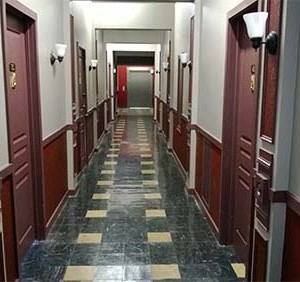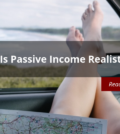- 4 Unexpected Things I’ve Learned From Buying My First Mobile Home Park
- How Ironic: America’s Rent-Controlled Cities Are Its Least Affordable
- U.S. homes are still a bargain on the international market
- Getting The Best Possible Quality Photos On MLSs and Syndicated Sites
- Home buyers in these markets have the upper hand
Success Not Based on Number of Doors Owned

When I first started investing in real estate and connecting with other real estate investors, I didn’t really have a clear goal as to what I wanted out of real estate. I’d hear some people wanting 100 doors, other people wanting $5,000 a month in cash flow, or some people just wanting to add more zeros to their bank account. So, I found myself starting to use those benchmarks to define my success.
For example, I met an investor who owned more than 200 doors and was adding several properties a week. I thought that was amazing! Having more than 200 doors sounded like a very impressive number. It made me wanted to get to 200 doors. My goal became “how can I buy more properties?” How can I, like the investor I know, buy up to 200 doors as well?
The Race to Acquire Property
It was that kind of thought process that propelled me towards creative financing in real estate investing. Admittedly, because I was fortunate enough to take on that challenge and walk that path still in the throes of the economic and housing crisis in Las Vegas, I was able to land some really great seller financed deals.
I kept thinking, “Okay, if I just keep getting some more with very little money down, I can multiply my real estate holdings at a great pace and soon, I’ll also be able to tell everyone that I own more than 200 doors.”
While owning many doors with seller financing has its own benefits, such as: 1) extreme leverage that is positioned to fully capture real estate returns when the market appreciates, 2) most of the time mortgage payments can pay down debt, and 3) the ability to control real estate with little money, it also has its costs.
Unforeseen Difficulties
Owning properties is not an easy task. As a landlord, you are faced with vacancy, repairs, and bad tenants. These things may not happen very often, but they can all happen at once. You may think you have cash flow, when in reality, you may not. Also, you may think you have enough reserves, when in reality, if all bad things happen at once, you do not have the reserves.
I did not experience such difficulties in 2013, so I figured I was doing just fine. However, in 2014, I’ve experienced several air conditioners breaking down at once, a roof that needed to be replaced, and rounds of bad tenants leaving the property in a mess. I accounted for all the bad things in my financial calculation, but I didn’t account for them to happen all at once. Needless to say, I don’t think I’ve been having the most pleasant year of landlording in 2014.
Nevertheless, I think what happened in 2014 has taught me a great lesson.
A Lesson Learned
The lesson is that real estate success is not about how many doors you own.
I may own more properties than another investor, but the fact of the matter is, my portfolio might be a lot more risky than that investor. I may have been more exposed to a total collapse than another more prudent investor. Maybe I can earn more in the good times, but what about the bad times?
Perhaps having a large cash flow cushion every month is more valuable than having an over-leveraged portfolio, hoping to hit the big score.
Interestingly, I’ve since heard that the investor who owned so many doors has collapsed recently. I did not get the exact details, but to me it seemed like he or she was running an operation that he or she couldn’t handle. The portfolio probably incurred way too much debt, and the properties weren’t cash flowing like they were projected to.
While the investor could be an awesome real estate acquirer, it does not necessary mean what he or she acquired made financial sense for the portfolio as a whole. Maybe the investor wasn’t prepared for the black swan event of, say, having 100 water heaters breaking down all at the same time. With each property added to the portfolio, you face the higher risk of having everything fall on you at once.
That’s something I believe not many investors necessarily consider.
Conclusion
So, what will I do now? I am no longer thinking about having a big number. I am thinking about how to make my portfolio more profitable. If that means I have to sell some properties and forego the possibility of future appreciation, then so be it. If that means I have to move away from some trouble spots and take less yield to avoid bad tenants, then so be it.
I am no longer thinking about the big number of doors. I am thinking about how to finish the real estate marathon.




 100% Secure
100% Secure
You must be logged in to post a comment Login